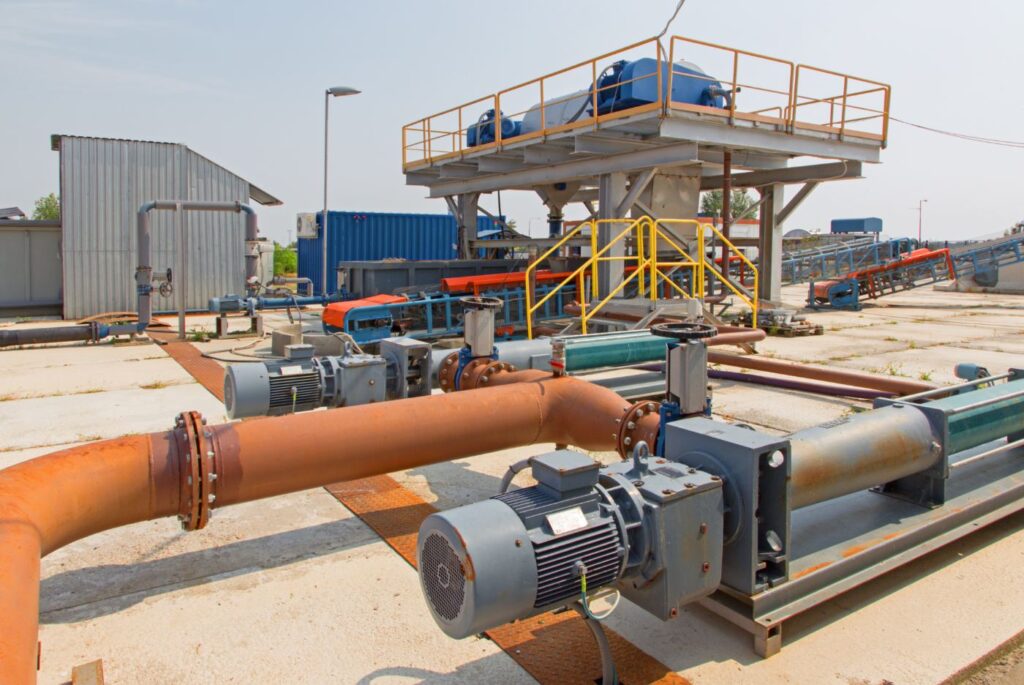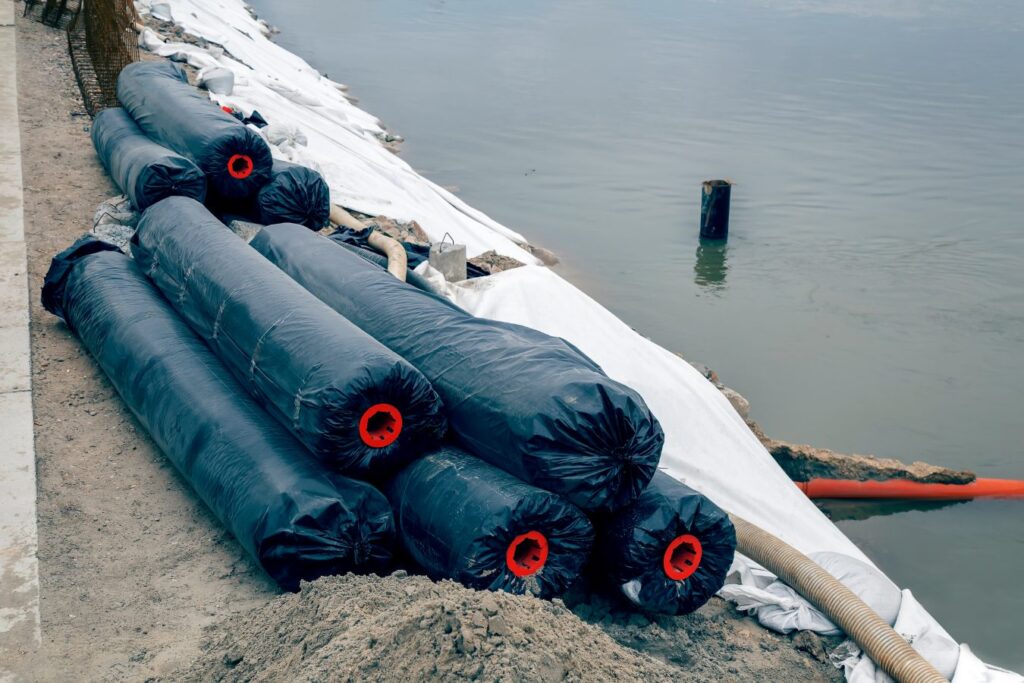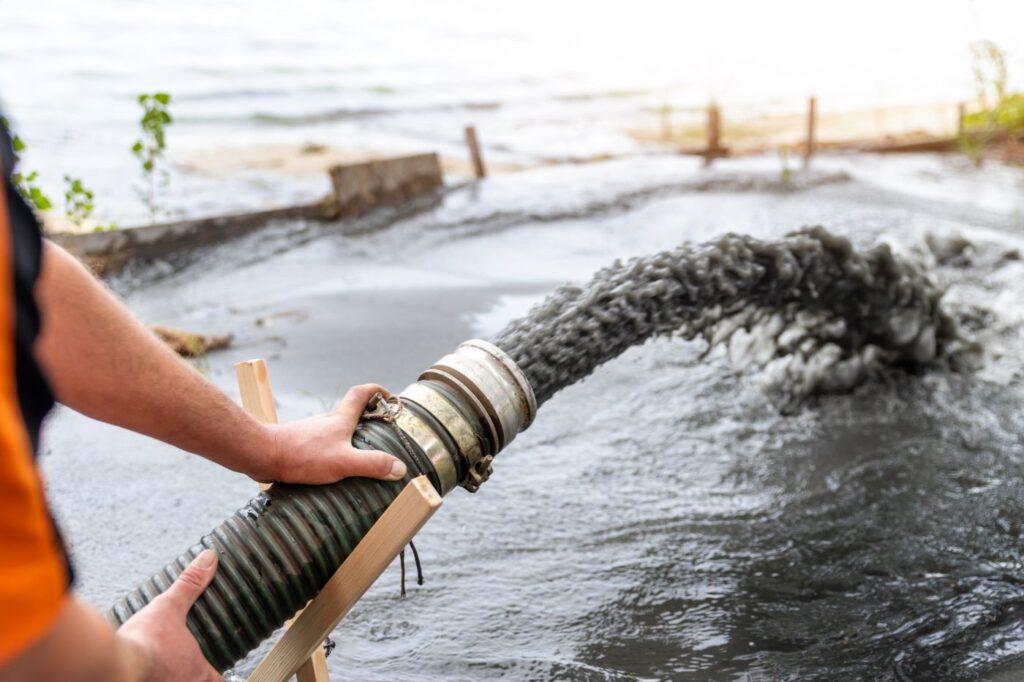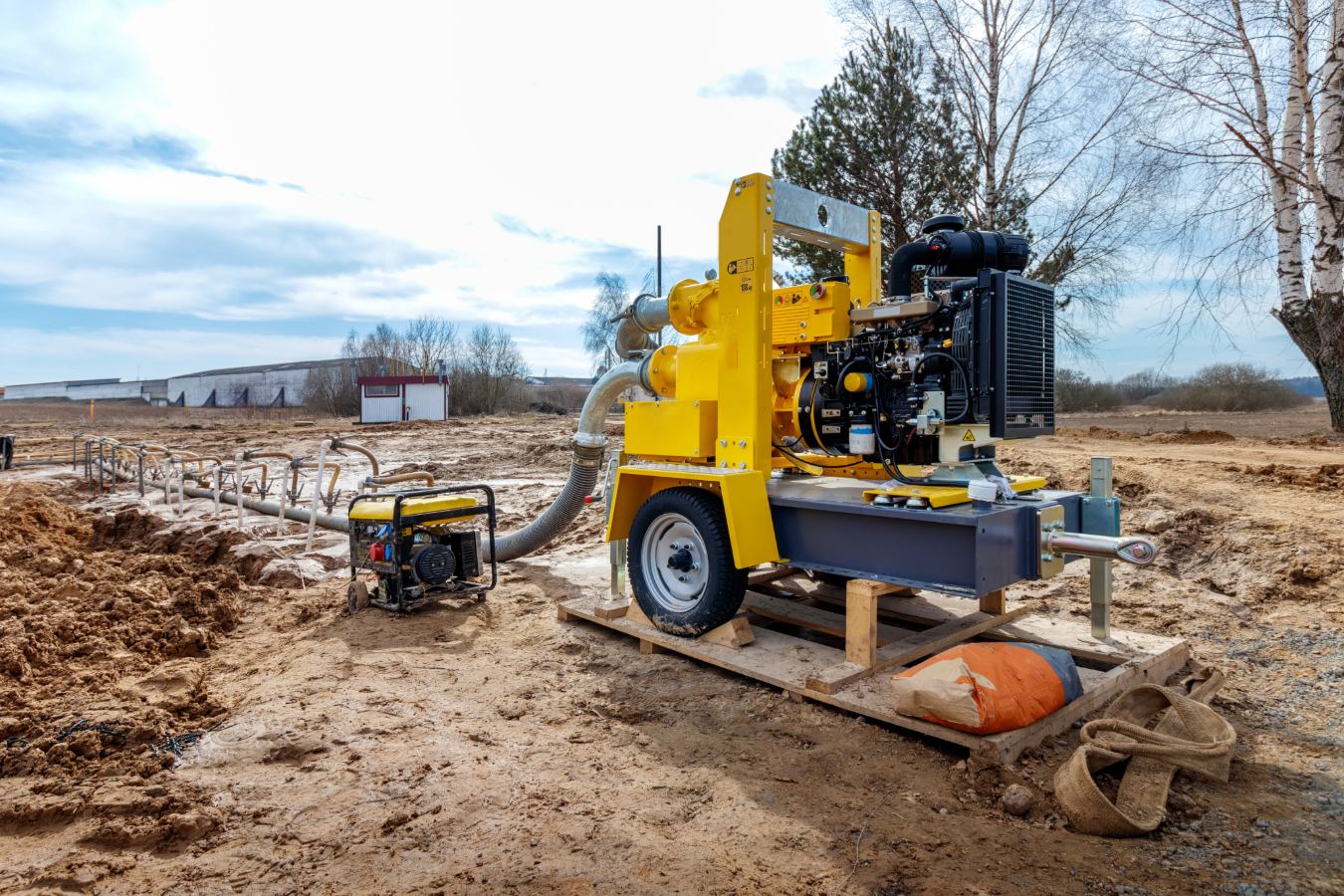With a wide range of sludge dewatering equipment available today, selecting the right system for your operation can significantly impact efficiency, compliance, and cost. Each type of dewatering equipment—from mechanical presses to passive filtration methods—offers unique benefits and limitations, depending on the characteristics of the sludge, throughput requirements, and site conditions. Whether managing daily operations at a municipal treatment plant or deploying mobile dewatering equipment for a remote cleanup project, understanding the pros and cons of each system is essential to making an informed, strategic decision.
Belt Filter Press
The belt filter press is one of the most commonly used options for sludge dewatering in municipal and industrial wastewater treatment facilities. This system operates through continuous mechanical separation, where sludge is fed between two porous belts and pressed by a series of rollers to squeeze out excess water. As the sludge moves through the press, increasing pressure is applied, gradually removing moisture and producing a semi-solid sludge cake suitable for transport or disposal.
Pros
One of the key advantages of the belt filter press is its high throughput capacity, making it an ideal solution for facilities that process large volumes of sludge on a daily basis. It is particularly effective in municipal applications where operational continuity is crucial. Additionally, this type of dewatering equipment is recognized for its relatively low energy consumption compared to other mechanical systems, providing cost savings and enhanced sustainability for long-term operations. Its continuous operation also makes it a reliable choice for round-the-clock sludge processing.
Cons
Despite its efficiency, the belt filter press does have some limitations. It typically requires polymer conditioning to enhance solid-liquid separation, which can increase chemical costs and impact environmental considerations. The system is also maintenance-intensive, especially in high-load environments, as belts and rollers need frequent cleaning and periodic replacement. Moreover, the solids content achieved is often lower than with other types of sludge dewatering equipment, which may necessitate additional drying or handling steps.
Best Fit
The belt filter press is best suited for municipal wastewater treatment plants and paper mills, where sludge is consistently generated and operational efficiency is paramount. Its ability to process large volumes and operate continuously also makes it a viable complement to mobile dewatering equipment setups during plant expansions or temporary system upgrades.
Centrifuge Dewatering Systems

Centrifuge systems are a widely used type of sludge dewatering equipment that relies on rapid rotational force to separate solids from liquids. In this method, sludge is introduced into a high-speed rotating drum, where centrifugal force pushes denser solid particles outward while allowing the liquid to flow through a separate outlet. This enclosed and continuous process makes centrifuges an efficient solution for industries dealing with high-volume or high-density sludge.
Pros
Centrifuge dewatering systems are valued for their compact, enclosed design, which minimizes odor, splashing, and environmental exposure, making them ideal for facilities with strict hygiene or containment standards. These systems also deliver high solids capture efficiency, meaning more sludge is retained and less ends up in the filtrate. In addition, centrifuges offer fast setup, seamless integration with automated systems, and consistent performance, making them one of the most automation-friendly options among dewatering equipment technologies.
Cons
Despite their operational strengths, centrifuge systems come with trade-offs. Their high rotational speeds require significant power, leading to increased energy consumption and operational costs. They are also sensitive to fluctuations in feed sludge consistency, requiring careful monitoring or conditioning for optimal performance. Furthermore, the upfront investment and ongoing maintenance costs are generally higher than other forms of sludge dewatering equipment, due to the complexity of their mechanical and electronic components.
Best Fit
Centrifuge systems are best suited for demanding industrial applications such as oil and gas operations, mining sites, and food processing plants. These industries benefit from the centrifuge’s ability to handle a wide range of sludge types and maintain high throughput. When used as part of a mobile dewatering equipment solution, centrifuges can also support remote or field-based projects where space, cleanliness, and performance are critical.
Screw Press
The screw press is a type of sludge dewatering equipment that uses a slow-speed, low-energy screw mechanism to compress and dewater sludge gradually. It operates continuously, relying on pressure generated by a rotating screw and a moving ring system to separate water from solids. The screw press is designed for consistent, low-maintenance operation and is particularly suited for smaller facilities seeking to enhance sludge handling without requiring heavy infrastructure or complex setup.
Pros
One of the most notable advantages of the screw press is its low energy consumption and quiet operation, making it ideal for indoor or noise-sensitive environments. The system is largely self-operating, requiring minimal manual oversight or intervention. Additionally, screw presses are fully enclosed, which helps control odor and prevents spillage—an important benefit in industries with strict hygiene or environmental standards. These characteristics make it a sustainable and user-friendly option within the broader range of dewatering equipment technologies.
Cons
While efficient and compact, screw presses do have limitations in processing capacity. They typically offer lower throughput per unit compared to other sludge dewatering equipment, which can be a constraint for high-volume operations. The technology is also less effective with very fine or dilute sludge, often requiring pre-thickening to achieve optimal results. These factors may limit its standalone use in large-scale treatment plants or highly variable feed conditions.
Best Fit
The screw press is best suited for small to mid-sized industrial facilities, including those in the food and beverage sector, where sludge is relatively consistent and odor control is a priority. It is also compatible with mobile dewatering equipment setups, providing a compact, energy-efficient solution for remote operations or temporary deployments that demand quiet, reliable sludge management.
Filter Press
The filter press is a powerful and widely used sludge dewatering equipment designed to produce high-solids sludge cake through a batch-operated, high-pressure filtration process. In this system, sludge is pumped into a series of filter plates lined with permeable cloth. As pressure builds, liquid is forced through the cloth and exits the system, while solids are retained, forming dense, dry cakes between the plates. This method is highly effective for reducing sludge volume and is favored in operations where maximum dryness is required.
Pros
Filter presses excel at producing exceptionally dry sludge cake, often with one of the highest solids contents achievable among all dewatering equipment types. This significantly reduces disposal volume and cost. Because the process is enclosed, it generates minimal odor and prevents leakage, making it suitable for facilities with stringent environmental controls. Additionally, the filter press is ideal for treating hazardous or toxic sludge, as it provides controlled containment throughout the dewatering cycle.
Cons
Despite its efficiency, the filter press operates in batch mode, which can be labor-intensive and time-consuming compared to continuous systems. It requires careful setup, regular cleaning, and monitoring to maintain optimal performance and avoid clogging or pressure loss. Manual models can also have a large physical footprint, which may be a constraint in space-limited environments or mobile setups.
Best Fit
Filter presses are particularly well-suited for chemical processing facilities and industries that manage sludge with high concentrations of heavy metals or other contaminants. These operations benefit from the high dryness and safe handling that this sludge dewatering equipment provides. While less common, certain mobile dewatering equipment systems incorporate small-scale filter presses for projects that demand high-performance dewatering in field conditions, especially where waste regulations are strict.
Geotextile Tubes / Bags

Geotextile tubes or bags represent a passive, low-cost form of sludge dewatering equipment that uses large permeable fabric containers to separate solids from liquids. Sludge is pumped into these specially designed bags, which allow water to seep through the woven fabric while retaining solids inside. Over time, gravity and filtration reduce the moisture content of the sludge, forming a compacted sludge cake within the tube. This method is widely used in environments where simplicity, scalability, and minimal infrastructure are priorities.
Pros
One of the biggest advantages of geotextile tubes is their affordability and ease of deployment. They require no power, complex machinery, or skilled operators, making them accessible for small-scale projects or operations with limited budgets. Their modular nature allows for scalable use across varying sludge volumes, making them especially effective in remote locations. When integrated with mobile dewatering equipment, geotextile tubes provide a practical extension for temporary or field-based sludge management setups.
Cons
Despite their accessibility, geotextile tubes are among the slowest dewatering equipment options, with dewatering often taking several days or weeks, depending on the sludge type and environmental conditions. They also require substantial space to lay out the bags, which can be a constraint in confined or urban project sites. Additionally, they are not ideal for urgent or high-volume operations that require rapid processing and continuous throughput
Best Fit
Geotextile tubes are best suited for agricultural applications, dredged material drying, lagoon cleanouts, and rural projects where power sources and permanent infrastructure are unavailable. Their compatibility with mobile dewatering equipment makes them an effective solution for large-area sludge management, especially in locations where minimal environmental disturbance is a priority.
Choosing the Right Equipment for Your Operation

Selecting the right sludge dewatering equipment depends on multiple factors unique to each operation, including the type of sludge being processed, as well as logistical and budgetary constraints. With a range of technologies available—each offering distinct advantages and limitations—it’s critical to align your equipment choice with both operational demands and environmental compliance goals.
Matching Equipment to Sludge Type
Different types of sludge require different dewatering approaches. Organic sludge from municipal or food processing sources may benefit from screw presses or belt filter presses. Abrasive or high-solid sludge, such as mining tailings or drilling mud, often requires robust systems like centrifuges or filter presses. For oily or chemically reactive sludge, enclosed systems with high solids capture, such as centrifuges or filter presses, offer better containment and safety. Fine solids, on the other hand, may demand polymer conditioning or pre-thickening to be effectively processed by any sludge dewatering equipment.
Operational Factors: Throughput, Footprint, and Power
The volume of sludge you need to process directly influences the size and type of dewatering equipment required. High-throughput operations benefit from centrifuges or belt filter presses, while smaller facilities may favor screw presses or geotextile tubes. Available space and infrastructure also matter—systems like filter presses can have a large footprint, whereas screw presses are more compact. Power availability is another critical factor, especially in remote or off-grid locations, where low-energy or passive systems may be more practical.
Mobility Needs: When to Consider Mobile Dewatering Equipment
For temporary projects, seasonal operations, or remote job sites, mobile dewatering equipment offers unmatched flexibility. These self-contained units can be rapidly deployed, reducing transportation costs and allowing for on-site sludge processing. Mobile systems are ideal for emergency spill response, lagoon cleanouts, or infrastructure upgrades where fixed installations are not feasible or cost-effective.
Budget, Maintenance, and Operator Skill Level
Cost is a key consideration—not just the initial purchase price, but also ongoing maintenance, energy consumption, and labor. Some sludge dewatering equipment requires skilled operators and frequent maintenance, while others are designed for automated or hands-off operation. Filter presses and centrifuges, for instance, offer high performance but require more attention to detail. Screw presses and geotextile tubes, by contrast, are simpler to operate and maintain, making them suitable for facilities with limited staffing or technical expertise.
Conclusion
Choosing the best sludge dewatering equipment comes down to aligning technology with your operational goals, the type of sludge, and the availability of resources. From high-efficiency centrifuges to cost-effective geotextile bags, each solution serves a specific purpose within modern waste management. By evaluating system capabilities, footprint, maintenance needs, and the potential benefits of mobile dewatering equipment, operators can ensure both regulatory compliance and long-term performance. A well-chosen dewatering system is not just a tool—it’s a critical asset in sustainable, cost-effective sludge handling.


